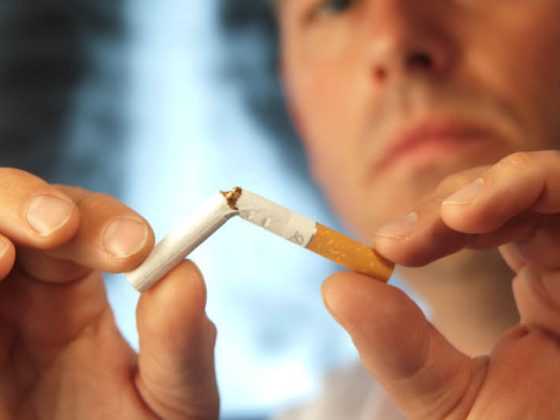Osteoarthritis is one of the most common degenerative diseases and a major cause of disability and quality of life limitations. The treatment of osteoarthritis is therefore of great importance, all the more so as the incidence of osteoarthritis is constantly increasing with the aging of the population. In practice, patients benefit most from a multimodal approach to therapy that combines information, physical therapy, activation, and medication.
Discussions about the best osteoarthritis therapy unfortunately all too often get lost in evaluating individual treatment measures and, in particular, comparing the efficacy and tolerability of different drugs for pain management. However, the goal of osteoarthritis therapy is not only to reduce pain, but also to improve functionality. The spectrum of available non-drug measures is wide: it ranges from physiotherapy and various aids to endoprosthetics. It is especially important to train muscular strength, endurance and coordination, which contributes significantly to functional improvement.
Therapy strategy: individualized multimodal treatment most successful
Osteoarthritis therapy should always be individualized according to functional limitations and clinical findings, such as inflammatory activation, periarthropathy, malalignment, instability, muscular insufficiency, or obesity. Treatment must also not be based solely on radiographic findings, which often correlate poorly with clinical findings – this is especially true for the indication of joint prosthesis. The full range of treatment options must be used to the best of their ability. A multimodal arthrosis therapy, targeting several or as many points as possible, is most effective. Prior to any therapy, ensure that other conditions with similar symptomatology are not present. In the case of joint effusion, it is particularly important to exclude arthritis by means of aspiration and examination of the synovial fluid.
Patient information: the be-all and end-all
Patient information is an integral element of the treatment of any chronic disease, because good information can have a lasting impact on outcome. All patients with osteoarthritis are to be informed in detail about their clinical picture and encouraged to learn about self-management strategies, for example with the information material of the Rheumaliga Schweiz.
Weight reduction: disease modifying in gonarthrosis.
Overweight patients should be advised to reduce their weight by diet and physical activity. The combination of diet and activity is not only additive, but synergistic in terms of functional improvement and pain reduction. Even a small weight loss of a few kilograms can have a positive effect. It is also well established that weight loss can slow the progression of gonarthrosis.
The value of other dietary measures is controversial. The focus of interest is on vitamin D and antioxidants such as vitamins C and E. At least in older persons, vitamin D supplementation is recommended.
Physical activity: endurance and strength training improve function
The choice of physical activities should take into account the pattern of affection and the severity of osteoarthritis, as well as the extent of deconditioning. Regular physical training can increase endurance and muscle strength and facilitate weight loss. All weight-bearing patients should be encouraged to engage in a regular low-impact aerobic exercise program such as walking, cycling, or swimming. Aquatic training is particularly useful in cases of severely reduced resilience. Targeted quadriceps strengthening will result in decreased knee pain and improved function. Strength training should be started with isometric exercises, only then transitioning to isotonic resistance exercises to the tolerance level. Such strengthening measures should always be combined with stretching. This is complemented by mobilizing gymnastics. A good motivation is essential for a longer-term retention of such
Activities crucial.
Physiotherapy: individualized multimodal treatment and instruction.
Physiotherapy for knee and hip osteoarthritis is always useful when the above measures remain insufficient or patients do not benefit enough from them. In physiotherapy, active and passive mobilizations are performed in particular, and patients are instructed to strengthen the muscles in a targeted manner as well as to protect the joints from overloading. Physical therapy can also do much to optimize long-term patient compliance.
Physiotherapeutically instructed taping is useful not only in patellofemoral syndrome, but also in gonarthrosis. Apart from medialization of the patella, the aim is to relieve the painful periarticular structures and
improve proprioception.
Physical measures are suitable for enabling active measures. Cold is useful in inflammatory activations; heat, ultrasound, and TENS have value mainly in periarthropathies.
Assistive devices and orthoses: Reduction of the biomechanical joint load
The use of a cane on the opposite side of the painful joint is useful as soon as walking function is affected. By means of a common walking stick, the joint load can be reduced by more than 50%. At the knee, elastic cuffs and – in case of severe instability or malposition – splints are also useful. Cuffs work mainly by improving proprioception. Thermoplastic splints are useful in osteoarthritis of the thumb joints and especially in rhizarthrosis. Shock-absorbing footwear helps with gonarthrosis, and wedge-shaped heel inserts can be used to attempt relief in unicompartmental forms.
Analgesics: Observe effect-to-toxicity ratio
For mild to moderate arthritis pain, paracetamol is the drug of first choice. If this does not work or works inadequately, NSAIDs or opioids can be switched to or added. Except for inflammatory activations of osteoarthritis, the primary use of NSAIDs should be avoided whenever possible because of their high risk of toxicity. Drug therapy must always take comorbidities into account. Therapy should be administered at the lowest effective dosage for the shortest period of time. With NSAIDs, consider the use of proton pump inhibitors.
Topical medications: well-tolerated self-management.
Topical pharmaceuticals are often unjustly underestimated. Their use is particularly useful when pain results from periarthropathy or when systemic preparations have too high a risk of toxicity. In addition to NSAIDs, capsaicin and various other herbal preparations (e.g., Arnica montana) may also be considered.
Intra-articular glucocorticoids: for inflammatory activation.
Intra-articular steroids are particularly suitable when there is inflammatory activation of osteoarthritis (night pain, morning stiffness, hyperthermia, joint effusion). The effect usually occurs very quickly, and the effect can last for a long time.
A correct sterile injection technique is a prerequisite for success. If the technique is blinded, the risk of paraarticular injection is high even for those with experience. For this reason, sonographically or radiologically guided injection is preferred, especially in the case of the hip joint.
Viscosupplementation: long-lasting effect with good tolerability
The injection of hyaluronic acid preparations is particularly useful in non-activated arthroses with sufficient residual cartilage. The effect is best proven in gonarthrosis. Other osteoarthritis may also be worth trying, such as Cox’s or rhizarthrosis. Compared to therapy with intra-articular glucocorticoids, the effect occurs with a delay, namely only about one month after the start of therapy. Pain reduction and functional improvement, on the other hand, often lasts for several months. The tolerability of biotechnologically produced hyaluronic acid preparations is excellent. Viscosupplementation is not covered by basic insurance; certain supplemental insurance plans cover it.
Periarticular infiltrations: very effective for decompensated osteoarthritis
In periarthropathy, local infiltration at the painful structures is preferred over articular injection. At the knee, infiltration of the pes anserinus in particular is often a very successful measure. A mixture of a crystalline steroid with a local anesthetic is best used.
Glucosamine and chondroitins: controversial effect
The effect of glucosamines and chondroitins taken is controversial. Some studies suggest small improvements in pain and function, as well as slowing cartilage degradation, especially when used early. The tolerability of these preparations is excellent. As a general rule, if they are of no use, they do no harm – but they do cost.
Complementary medicine: responding to patient expectations
The effectiveness of most complementary medicine interventions, such as acupuncture, is poorly established or not established at all. Depending on the patient’s expectations, however, its use may still make sense, especially since the placebo effect in pain therapy is generally quite large.
Adrian Forster, MD
CONCLUSION FOR PRACTICE
- Arthritis management is all the more effective the more individualized and multimodal it is put together.
- Reduction of body weight, activities to improve strength and endurance, and provision of assistive devices and orthotics are effective basic interventions with few side effects.
- Physical therapy is essential for targeted improvement of muscular function and mobility.
- Systemic pharmaceuticals for pain management are selected based on disease manifestations, pain intensity, and comorbidities.
- In the case of activated osteoarthritis, the injection of glucocorticoids is a rapid and very effective treatment measure.
- Viscosupplementation has a delayed effect compared with intra-articular glucocorticoids, but a longer-lasting effect.
- In periarthropathy (decompensated osteoarthritis), physical measures, application of topical pharmaceuticals, and local infiltrations are useful.
Literature:
- Hochberg MC, et al: American College of Rheumatology 2012 recommendations for the use of nonpharmacologic and pharmacologic therapies in osteoarthritis of the hand, hip, and knee. Arthritis Care Res 2012; 64: 465-474.
- Fernandes L, et al: European League Against Rheumatism (EULAR): recommendations for the non-pharmacological core management of hip and knee osteoarthritis. Ann Rheum Dis 2013; 72: 1125-1135.
- Jevsevar DS: Treatment of osteoarthritis of the knee: evidence-based guideline, 2nd edition. J Am Acad Orthop Surg 2013; 21: 571-576.
- McAlindon TE, et al: OARSI guidelines for the non-surgical management of knee osteoarthritis. Osteoarthritis Cartilage 2014; 22: 363-388.
- Larmer PJ, et al: Systematic review of guidelines for the physical management of osteoarthritis Arch Phys Med Rehabil 2014; 95: 375-389.
- Bruyère O, et al: An algorithm recommendation for the management of knee osteoarthritis in Europe and internationally: A report from a task force of the European Society for Clinical and Economic Aspects of Osteoporosis and Osteoarthritis (ESCEO). Semin Arthritis Rheum 2014 May 14 (Epub ahead of print). doi: 10.1016/j.semarthrit.2014.05.014.
HAUSARZT PRAXIS 2014; 9(8): 24-26











